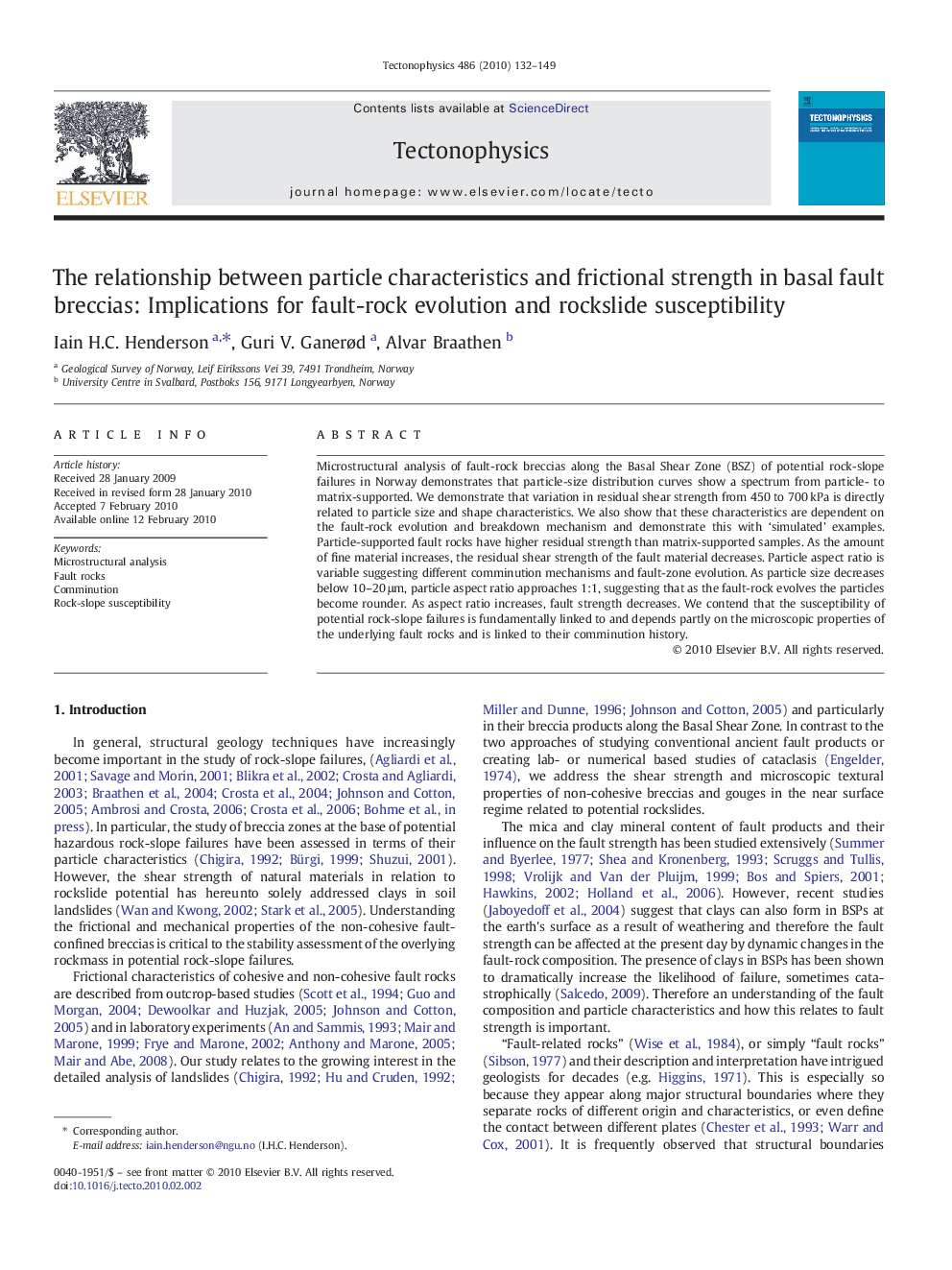| Article ID | Journal | Published Year | Pages | File Type |
|---|---|---|---|---|
| 4693627 | Tectonophysics | 2010 | 18 Pages |
Microstructural analysis of fault-rock breccias along the Basal Shear Zone (BSZ) of potential rock-slope failures in Norway demonstrates that particle-size distribution curves show a spectrum from particle- to matrix-supported. We demonstrate that variation in residual shear strength from 450 to 700 kPa is directly related to particle size and shape characteristics. We also show that these characteristics are dependent on the fault-rock evolution and breakdown mechanism and demonstrate this with ‘simulated’ examples. Particle-supported fault rocks have higher residual strength than matrix-supported samples. As the amount of fine material increases, the residual shear strength of the fault material decreases. Particle aspect ratio is variable suggesting different comminution mechanisms and fault-zone evolution. As particle size decreases below 10–20 μm, particle aspect ratio approaches 1:1, suggesting that as the fault-rock evolves the particles become rounder. As aspect ratio increases, fault strength decreases. We contend that the susceptibility of potential rock-slope failures is fundamentally linked to and depends partly on the microscopic properties of the underlying fault rocks and is linked to their comminution history.
